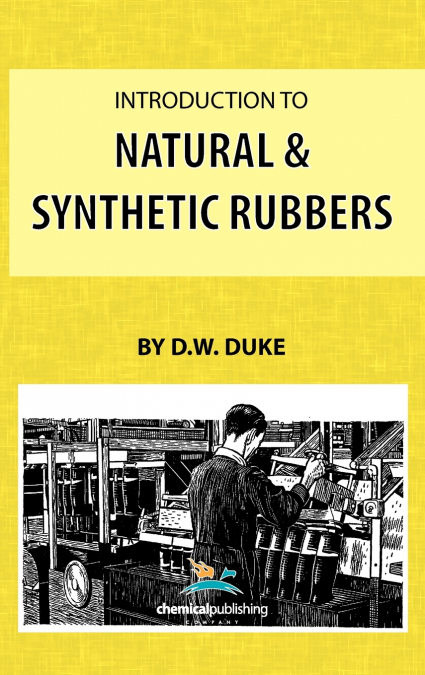
D. W. Duke / DWDuke
Acknowledgements - Introduction - Contents - Part One- Natural Rubber - 1. THE STORY OF NATURAL RUBBER - The early history - The beginnings of the rubber industry - Goodyear and vulcanization -Plantation rubber - 2. THE NATURE OF NATURAL RUBBER -The physical properties of natural rubber- Tensile properties - Dynamic properties - Hardness -Abrasion - Electrical properties -The chemistry of natural rubber -Atoms and molecules -The formula of natural rubber - The elasticity of natural rubber -Part Two-Synthetic Rubber -3. HISTORICAL INTRODUCTION TO SYNTHETIC RUBBER - The beginnings of synthetic rubber production -Synthetic rubber in the First World War - Progress between the wars - The American contribution -Developments after the Second World War - 4. THE MANUFACTURE OF GENERAL PURPOSE SYNTHETIC RUBBER - Butadiene: Petroleum - Butadiene and cracking -Styrene Production of the polymer: Emulsion polymerization -The polymerization formula - The synthetic rubber plant - 5. THE PROCESSING OF GENERAL PURPOSE SYNTHETIC RUBBER -Processing machinery: The bale-cutting machine - The mill - The internal mixer - The calendar - The spreading machine - The extruder Compounding: Plasticizers and softeners - Tack - Extenders - Reclaimed rubber - Fillers - Colouring materials - The ageing of rubber - Antioxidants -Vulcanization Accelerators - Vulcanization activators - Summary of compounding6. SPECIAL PURPOSE RUBBERS - Nitrile rubber - Butyl rubber - Neoprene - Thiokol -Silicone rubbers - Polyurethanes - Hard rubber - 7. THE MANUFACTURE OF RUBBER ARTICLES -Mechanicals: Soles and heels - Bathing caps - Hot water bottles -Extruded articles -Wires and cables -Hose: Plain hose - Wrapped hose - Moulded hose -Armouring -Belting: Conveyor belts - Transmission belting -Rubber balls: Gold balls -Tyres: The cover - The bead - The casing - The tread and sidewalls - Cover building - Vulcanizing the cover - Inner tubes - Goods from latex: Compounding latex - Dipped goods -Latex thread -Latex foam -Part Three-The Future of Rubber - 8. MODERN DEVELOPMENTS -Polymerization: Condensation polymerization - Addition polymerization - Initiators - The arrangement of atoms in a chain - Synthetic natural rubber - cis Polybutadiene - Radiation and rubber: Polymerization - Cross-linking - Looking ahead - Bibliography -Glossary -Index -Plates - The object of this book is to explain what these various rubbersare, how they behave, and why they behave as they do. As syntheticrubbers are now being made in this country and will play an importantpart in the future of the rubber industry, most of this book is devotedto them. How they are made and how they compare withnatural rubber is discussed in the appropriate place.-To enable a reasonable comparison to be made between naturalrubber and the various synthetic rubbers the subject has been treatedfrom a scientific standpoint, and to keep the size of the book betweenreasonable limits much technological information has been omitted.Because of the comparison between natural and synthetic rubbersthe first section of this book is devoted to natural rubber. In thissection the fundamentals of rubber science are introduced, to bedeveloped later in connection with the synthetic rubbers.This book is intended as an introduction to a complex subject,and as a surveyor report for non-technical readers who wish to knowsomething about rubber. The reader who requires further informationon a particular point or topic should consult the bibliographyat the end of the book.-